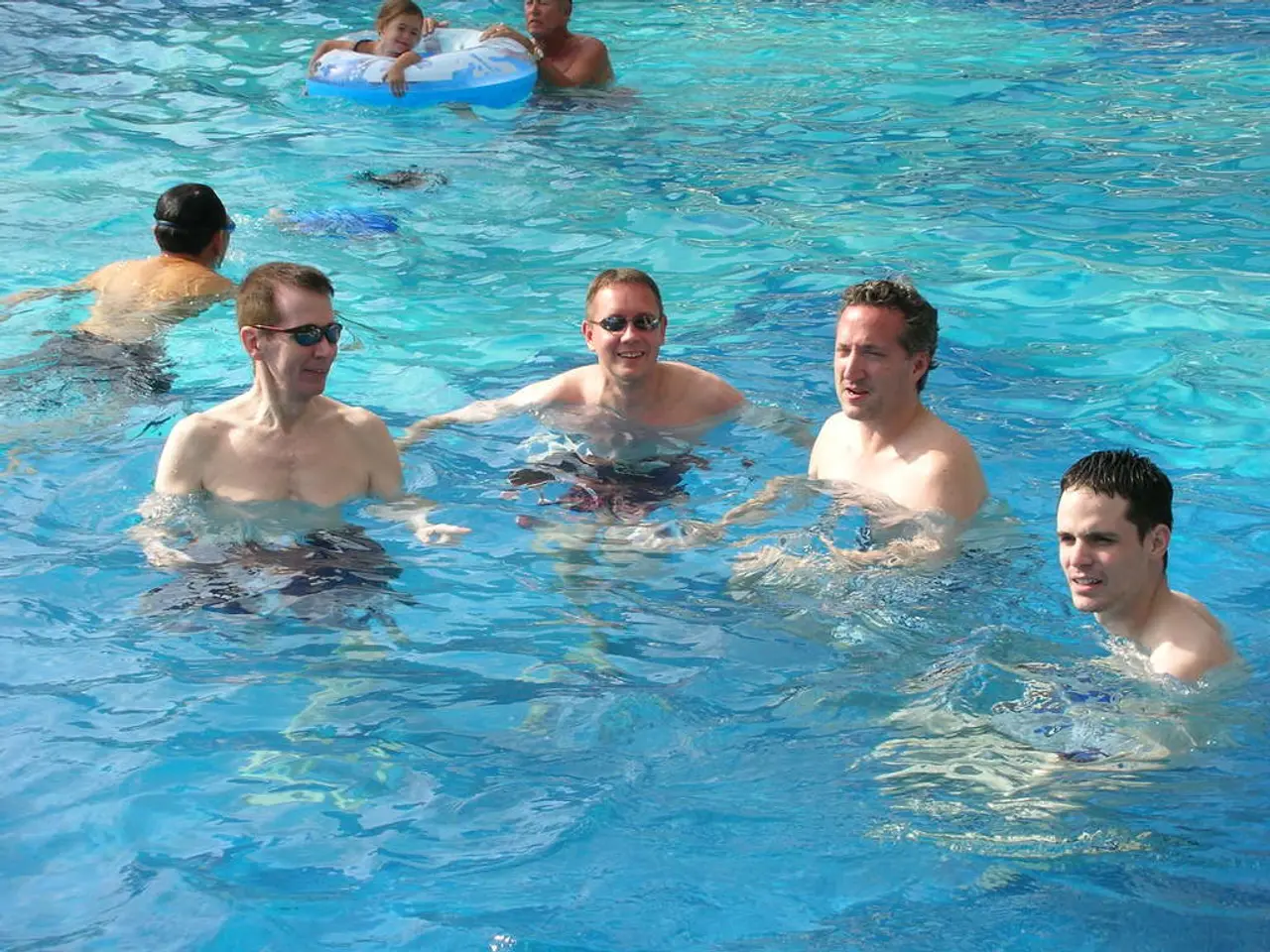A look back at the past regulations prohibiting public swimsuits and the practice of nude swimming in history
In the first half of the 20th century, nude swimming classes were a common practice in U.S. schools and YMCAs. This practice, largely justified by concerns over hygiene, health, and swimming safety, was particularly prevalent among white boys and men.
The rationale behind nude swimming included hygiene, as the lack of modern swimwear and improved laundering facilities made swimming nude seem like a practical solution to keep public pools clean. Safety and comfort were also important considerations, as swimming nude was believed to reduce the risk of swimwear getting caught or restricting movement in the water.
Cultural norms of the time played a significant role in the acceptance of this practice. Sexual modesty standards were different, and communal nude swimming was not considered inappropriate within segregated male groups, particularly for boys and young men.
Unfortunately, such nude swimming practices were primarily common for white boys and men. Due to racial segregation and discrimination, public swimming facilities were often limited or denied to Black Americans and other racial minorities during this period.
This custom began to decline mid-century as social attitudes shifted and better swimwear technology became available, alongside changing views on privacy and modesty. Nude swimming in public pools persisted until the 1970s or 80s in some cases.
Creed Erickson, born in 1954, grew up in a small town in Northwestern Pennsylvania. His swim classes at the YMCA were nude, reflecting the common practice of the time.
The commercialization of the naked body and its use for protest and political statement made it difficult to see the naked body as innocent and free of shame. This shift in societal perceptions further contributed to the decline of nude swimming classes.
Interestingly, the title scene from the G-rated Disney film "Pollyanna" (1960) depicts naked boys swimming, indicative of societal values at that time. This scene, along with other historical accounts, provides a glimpse into a bygone era when nude swimming was a common practice in American society.
For more detailed historical accounts on this practice, references can be provided upon request.
In the evolving landscape of health-and-wellness practices during the first half of the 20th century, science played a role in justifying nude swimming for reasons of hygiene and safety, as it was believed that swimming nude could keep public pools clean and reduce the risk of swimwear getting caught or restricting movement in the water. The fitness-and-exercise benefits of swimming were appreciated, with nudity making it easier for swimmers to move freely.




